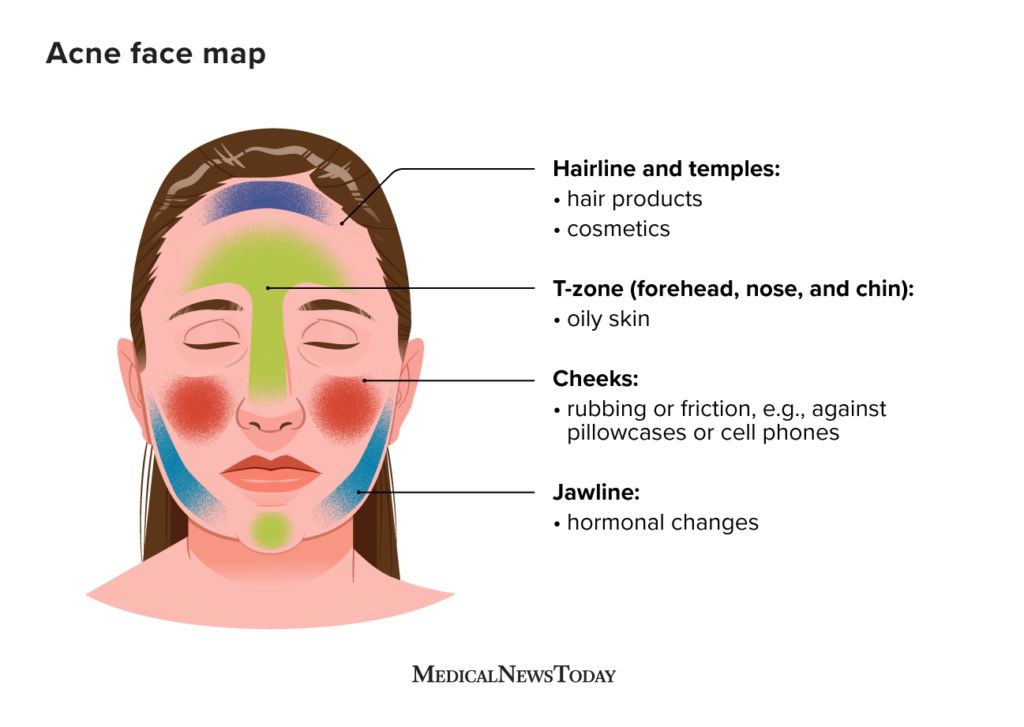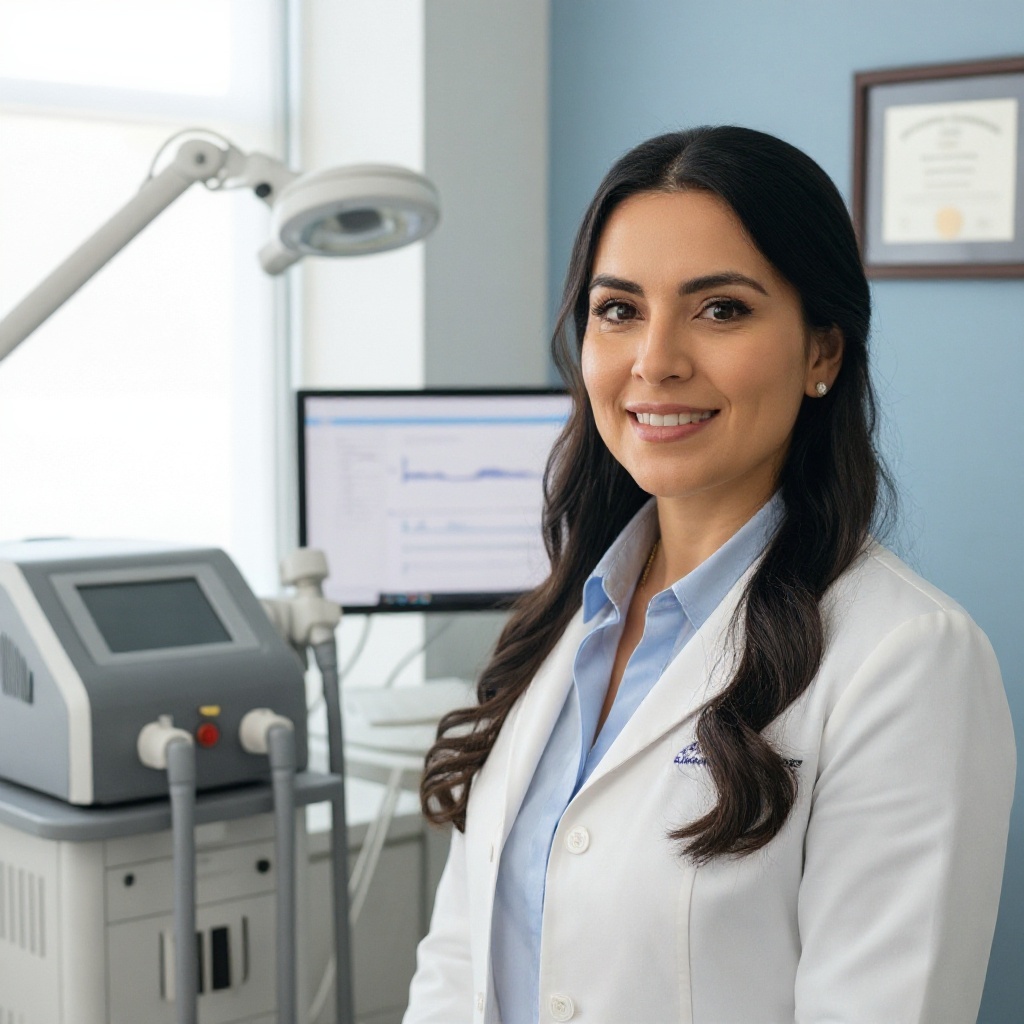Why You Have Acne on Your Jawline (And How to Finally Treat It)

Key points
- Menstrual Cycles: Many women experience flare-ups in the week before their period as hormone levels shift.
- Polycystic Ovary Syndrome (PCOS): This endocrine condition often involves higher levels of androgens, making persistent acne a common symptom, according to research on hormonal acne treatments.
- Pregnancy and Menopause: Major hormonal shifts during these life stages can trigger or worsen acne.
- Starting or Stopping Birth Control: Changes in hormonal medication can temporarily disrupt your body's balance, leading to breakouts.
Acne along the jawline can be one of the most stubborn and frustrating skin concerns. Unlike scattered pimples that come and go, jawline breakouts often feel deep, painful, and cyclical, reappearing in the same spots month after month. This pattern isn't a coincidence; it’s a strong clue about the underlying causes.
While all acne involves clogged pores, oil, and bacteria, breakouts on the lower third of the face are frequently tied to internal factors, primarily your hormones. Understanding these triggers is the first step toward finding a treatment that finally clears your skin for good.
What Causes Acne on the Jawline?
Jawline acne develops when hair follicles become clogged with excess oil (sebum) and dead skin cells, creating an environment for bacteria to thrive. However, several specific factors make the jawline particularly prone to these breakouts.
The Primary Culprit: Hormonal Fluctuations
If you notice your jawline acne flares up cyclically, hormones are the most likely cause. This is so common that dermatologists often refer to this pattern as the "beard of acne" in women.
The main driver is a group of hormones called androgens, such as testosterone. While considered male hormones, they are present in everyone. An increase in androgens—or even a shift in the ratio of androgens to other hormones like estrogen—can send your oil glands into overdrive. This excess oil is what leads to clogged pores.
This hormonal link explains why jawline acne is common during:
- Menstrual Cycles: Many women experience flare-ups in the week before their period as hormone levels shift.
- Polycystic Ovary Syndrome (PCOS): This endocrine condition often involves higher levels of androgens, making persistent acne a common symptom, according to research on hormonal acne treatments.
- Pregnancy and Menopause: Major hormonal shifts during these life stages can trigger or worsen acne.
- Starting or Stopping Birth Control: Changes in hormonal medication can temporarily disrupt your body's balance, leading to breakouts.
!A woman touching her jawline, where acne commonly appears due to hormonal changes.:max_bytes(150000):strip_icc()/GettyImages-1493956084-529be22b44fe4d508300fa9c56a3ee1c.jpg) Image Source: Verywell Health
Lifestyle and Environmental Factors
While hormones set the stage, your daily habits can contribute to the problem.
- Stress: When you're stressed, your body releases cortisol, which can increase inflammation and oil production, worsening breakouts.
- Friction and Pressure (Acne Mechanica): Anything that repeatedly rubs against your jaw can trap sweat, oil, and bacteria, leading to irritation and pimples. Common culprits include chin straps on helmets, violin placement, tight collars, and even resting your chin on your hands.
- Skincare and Hair Products: Thick, oily, or heavily fragranced products can clog pores. Look for products labeled "non-comedogenic," which means they are formulated to not block pores.
- Medications: Certain drugs, including corticosteroids, lithium, and some anticonvulsants, can list acne as a side effect.
The Diet-Acne Connection: What the Science Says
For years, the link between diet and acne was debated, but a growing body of research suggests a connection. While food isn't a direct cause for everyone, it can be a significant trigger for some.
- High-Glycemic Foods: Diets high in sugar and refined carbohydrates (like white bread, pastries, and soda) can spike blood sugar and insulin levels. This hormonal surge can increase oil production and inflammation. Studies have shown that a low-glycemic diet can lead to fewer breakouts for some people.
- Dairy: Some research has found a correlation between milk consumption, especially skim milk, and acne. This may be due to hormones and growth factors in milk that can influence your own hormonal balance.
It's important to remember that diet is a highly individual factor. If you suspect a food is triggering your acne, consider eliminating it for a few weeks to see if your skin improves.
Jawline Acne in Men: Distinct Causes and Solutions
While hormonal influences affect men too, jawline acne in men is often tied to specific grooming and lifestyle habits.
- Shaving: This is a major trigger. Dull razor blades can drag bacteria across the skin, and improper technique can lead to irritation and ingrown hairs that become inflamed and look like acne cysts.
- Folliculitis: Sometimes, what appears to be acne is actually folliculitis—an infection of the hair follicle. This is common in the beard area and can be caused by bacteria or ingrown hairs.
- Friction: Just like in women, chin straps from helmets or athletic gear can cause acne mechanica.
To combat this, men should focus on a clean shaving routine: use a sharp, single- or double-blade razor, shave in the direction of hair growth, and use a gentle, non-comedogenic shaving cream.
Effective Treatments for Jawline Acne
Because jawline acne has multiple causes, a combination of treatments is often most effective.
Over-the-Counter (OTC) Solutions
For mild to moderate acne, start with accessible OTC ingredients:
- Benzoyl Peroxide: Kills acne-causing bacteria and helps unclog pores. It's available in cleansers and spot treatments.
- Salicylic Acid: An exfoliant that dissolves oil and dead skin cells inside the pore to prevent clogs.
- Adapalene (e.g., Differin Gel): A topical retinoid that regulates skin cell turnover to prevent pores from becoming blocked. It was previously prescription-only but is now available OTC.
Prescription Medications and Treatments
If OTC products aren't enough after several weeks, a dermatologist can offer stronger options tailored to hormonal acne.
- Topical Treatments: Prescription-strength retinoids (like Tretinoin), topical antibiotics, and dapsone gel can reduce inflammation and prevent new breakouts.
- Oral Medications:
- Antibiotics: Reduce bacteria and inflammation for more widespread or severe acne.
- Hormonal Therapies: For women, oral contraceptives (birth control pills) can regulate hormones. Spironolactone, a medication that blocks the effects of androgens on oil glands, is another highly effective option for hormonal acne, as noted by Tufts Medicine.
- Isotretinoin: Reserved for severe, cystic, and scarring acne that hasn't responded to other treatments.
In-Office Procedures by a Dermatologist
For immediate relief from large, painful cysts and to prevent scarring, a dermatologist may perform:
- Corticosteroid Injections: Injected directly into a large cyst, this can dramatically reduce inflammation and size within 24-48 hours.
- Chemical Peels: Use acids to exfoliate the skin, unclog pores, and improve skin texture.
- Light and Laser Therapy: Can help reduce bacteria and inflammation.
 Image Source: Medical News Today
Image Source: Medical News Today
Prevention: How to Keep Your Jawline Clear
Once your acne is under control, consistency is key to preventing its return.
Skincare Routine Essentials
- Cleanse Gently: Wash your face twice a day with a mild, non-abrasive cleanser. Scrubbing too hard can irritate the skin and make acne worse.
- Use Non-Comedogenic Products: Ensure your moisturizer, sunscreen, and makeup won't clog your pores.
- Don't Pick: Squeezing pimples can push bacteria deeper into the skin, leading to more inflammation and potential scarring.
Lifestyle Habits
- Hands Off: Avoid resting your chin in your hands or touching your face unnecessarily.
- Keep It Clean: Regularly wipe down your cell phone and wash pillowcases and any gear (like helmet straps) that touches your jaw.
- Manage Stress: Incorporate stress-reducing activities like exercise, meditation, or getting enough sleep to help keep your hormones in balance.
When to See a Dermatologist
It's time to consult a board-certified dermatologist if:
- Your acne doesn't improve after 6-8 weeks of consistent OTC treatment.
- You have deep, painful cysts or nodules.
- Your acne is leaving scars or dark spots.
- It is causing you significant emotional distress.
- You have other symptoms of a hormonal imbalance, such as irregular periods or excessive hair growth.
A dermatologist can provide an accurate diagnosis and create a personalized treatment plan to help you achieve clear, healthy skin.
References
- Medical News Today. (2025). Jawline acne: Causes, treatment and prevention. https://www.medicalnewstoday.com/articles/321218
- Verywell Health. (2025). Why You Have Jawline Acne and What to Do About It. https://www.verywellhealth.com/jawline-acne-8646551
- Tufts Medicine. (n.d.). Adult Acne at Age 30. https://www.tuftsmedicine.org/about-us/news/adult-acne-age-30
- American Academy of Dermatology Association. (n.d.). Can the right diet get rid of acne? https://www.aad.org/public/diseases/acne/causes/diet
- Gallo, R. L., et al. (2016). Hormonal treatment of acne vulgaris: an update. Clinical, Cosmetic and Investigational Dermatology. https://pmc.ncbi.nlm.nih.gov/articles/PMC5015761/

About the author
Elena Vance, MD, is a double board-certified dermatologist and pediatric dermatologist. She is an assistant professor of dermatology at a leading medical university in California and is renowned for her research in autoimmune skin disorders.